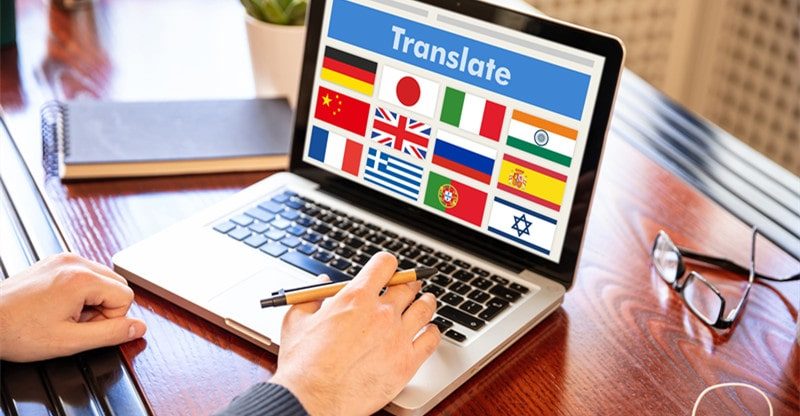The Art Of Translation: Navigating The Challenges And Complexities
Translation is a complex and challenging art that requires a deep understanding of both the source and target languages, cultures, and contexts.
Whether it’s translating a literary masterpiece or a technical document, translators must navigate an array of linguistic and cultural barriers to ensure that the message is conveyed accurately and effectively.
The process of translation involves more than just substituting words from one language to another. It requires careful consideration of the nuances of both languages, including idiomatic expressions, idioms, metaphors, and cultural references.
Moreover, translators must have a solid grasp of the subject matter they are translating to ensure accuracy in conveying the intended meaning.
In this article, we explore some of the challenges and complexities involved in the art of translation and offer insights into how translators can navigate them successfully.
Understanding The Source And Target Languages
Understanding the source and target languages is crucial when it comes to translation. It’s not just about knowing the words, but also understanding the cultural context in which they are used. This means that a translator must be fluent in both the source and target languages, as well as have a deep understanding of both cultures.
One challenge of translation is that each language has its own unique structure and syntax. For example, while English follows a subject-verb-object structure, other languages may follow different structures or even have no set structure at all.
A good translator must be able to navigate these differences and find ways to accurately convey meaning while staying true to the original text.
Another important aspect of understanding the source and target languages is recognizing nuances in meaning. Words can have multiple meanings depending on context, and some concepts may not even exist in one language but do in another.
A skilled translator must be able to identify these subtle differences and find ways to convey them accurately in the target language without losing their intended meaning.
Grappling With Linguistic Barriers
After gaining a deep understanding of both the source and target languages, a translator must now grapple with the linguistic barriers that may arise.
One of the biggest challenges is ensuring that the meaning and tone of the original text are accurately conveyed in the translation. This requires not only a mastery of the language but also an understanding of cultural nuances and references.
Another obstacle that translators face is dealing with idiomatic expressions and colloquialisms. These can be difficult to translate as they often have no direct equivalent in the target language. A skilled translator must be able to find creative ways to convey these expressions without losing their intended meaning.
Finally, translators must also navigate technical jargon and specialized terminology used in certain fields such as medicine or law. Without proper knowledge of these terms, it can be easy to make mistakes or misinterpret important information. In order to overcome this challenge, translators often work closely with subject matter experts who can provide them with necessary context and clarification.
In conclusion, translating is not simply about converting words from one language to another. It requires a deep understanding of both languages, cultural sensitivity, creativity, and technical expertise. Despite its challenges, however, translation plays a crucial role in breaking down linguistic barriers and facilitating communication between people from different parts of the world.
Cultural Considerations In Translation
Translating a piece of work requires more than just changing words from one language to another. It involves navigating through a wide range of challenges and complexities that could influence the understanding and impact of the final translation. One of the most significant considerations for translators is culture.
Language and culture are intertwined, with each influencing the other in various ways. Therefore, cultural considerations should be taken into account when translating works across different cultures. For instance, words and phrases may have different meanings or connotations in different languages, which could affect how readers interpret the translated text.
Translators need to understand the cultural nuances that exist between languages to ensure that their translations are accurate and culturally relevant. This means having an in-depth knowledge of the cultural context of both the source and target languages. By doing so, translators can create translations that resonate with their audience while retaining the intended meaning of the original text.
Sub-list 1:
– Cultural references: Including references to well-known cultural aspects such as music, literature or art can help make a translation more relatable to its target audience.
– Sensitive topics: Some topics may be taboo or culturally inappropriate in certain cultures; therefore, it is essential to avoid using language that may cause offense.
Sub-list 2:
– Humor: What might be considered funny in one culture may not be so funny in another culture. Therefore, it is important to consider whether jokes or humorous anecdotes will translate well.
– Tone: Different cultures may place varying levels of importance on maintaining politeness, formality or informality within language use. Translators must keep this in mind when adapting tone for their target audience.
Cultural considerations are crucial when translating works across different languages and cultures. It is essential for translators to have an extensive understanding of both source and target cultures to ensure accuracy and relevance while retaining meaning from the original text. By taking cultural considerations seriously, translators can create translations that resonate with their intended audience while accurately conveying the meaning of the original text.
Conveying Nuances And Idiomatic Expressions
Conveying nuances and idiomatic expressions is perhaps one of the greatest challenges that translators face. These aspects of language are deeply rooted in culture, history, and tradition – making them difficult to translate without losing their original meaning and flavor.
However, conveying these subtleties accurately is crucial for a successful translation that resonates with the target audience.
Idiomatic expressions, in particular, can be tricky to translate as they often have no direct equivalent in other languages. These expressions are commonly used by native speakers and convey a specific message or feeling that cannot be expressed through literal translations. As such, translators must understand the cultural context behind an expression to accurately convey its intended meaning.
Similarly, nuances in language such as tone, humor, and sarcasm require careful consideration when translating. What may be funny or sarcastic in one language may not come across the same way in another language. Translators must take into account the target audience’s cultural background and adjust their translations accordingly to ensure that these subtleties are conveyed accurately.
In essence, conveying nuances and idiomatic expressions requires a deep understanding of both the source and target languages’ cultures. It involves more than simply translating words but also understanding the underlying meanings behind them.
A skilled translator must navigate these complexities while ensuring that the final product maintains its intended impact on the reader.
Subject Matter Expertise
In order to convey nuances and idiomatic expressions accurately, a translator must have a deep understanding of both the source language and the target language. This requires not only fluency in both languages, but also an awareness of cultural differences and how those differences impact language use.
A skilled translator will be able to recognize when an idiom or colloquialism in one language has no direct equivalent in the other and will work to find a way to communicate the intended meaning without losing the essence of the original text.
However, subject matter expertise is also essential for successful translation. When translating technical or specialized content, such as medical or legal documents, a translator must have a solid understanding of the relevant terminology and concepts in both languages.
This ensures that technical jargon is accurately translated and that important details are not lost in translation. Additionally, subject matter expertise can help ensure that translations are culturally appropriate and do not inadvertently offend or misrepresent certain groups or individuals.
In some cases, it may be necessary for translators to seek assistance from subject matter experts in order to accurately convey complex terminology or concepts. This collaboration between experts in different fields can result in more accurate translations that are better suited to their intended audience.
Ultimately, combining linguistic expertise with subject matter knowledge is essential for successful translation that effectively conveys meaning across languages and cultures.
Handling Technical Documents
Translating technical documents poses a unique set of challenges that require specific skills and knowledge. Unlike literary texts, technical documents deal with specialized terminology, complex concepts, and precise language. As a result, translators must possess a deep understanding of the subject matter they are translating to produce an accurate and coherent translation.
To handle technical documents effectively, translators must have a solid grasp of both the source and target languages. They must also be familiar with the industry or field in which the document is written.
A thorough understanding of technical terminology is essential to ensure that key concepts are accurately conveyed in the translation. Additionally, they may need to consult subject-matter experts or conduct research to fully comprehend the content.
Maintaining consistency throughout the document is another crucial aspect of handling technical translations. This requires attention to detail and careful consideration of word choice, sentence structure, and formatting.
Translators should use translation memory tools to ensure consistency across multiple documents or updates to existing ones. With these tools, they can easily access previously translated terms or phrases and maintain consistency within the document as well as across projects.
Balancing Accuracy And Creativity
In handling technical documents, translators face a unique set of challenges. These documents often contain specialized terminology and complex concepts that require precise translation. Inaccuracies or errors in translation can have significant consequences, such as miscommunication between professionals or even safety risks.
However, translating technical documents does not only require linguistic accuracy. It also demands an understanding of the subject matter and the intended audience. Translators must be able to convey information clearly and concisely while ensuring that the translated text is appropriate for its context.
Balancing accuracy and creativity are another challenge that translators face. While it may seem counterintuitive, translations often require a degree of creative interpretation in order to accurately convey meaning across languages and cultures. However, this creativity must be balanced with a commitment to preserving the original intent of the text.
To achieve this balance, translators may employ various techniques such as:
– Researching cultural nuances and idiomatic expressions
– Consulting with subject matter experts
– Making use of footnotes or glossaries to provide additional context
Ultimately, successful translation requires a deep understanding of both language and culture. By navigating the complexities of technical language and balancing accuracy with creativity, translators can ensure that their work effectively communicates across linguistic boundaries without sacrificing the integrity of the original text.
Tips For Successful Translation
Now that we’ve explored the challenges and complexities of translation, let’s dive into some tips for successful translation. Whether you’re a professional translator or simply translating documents for personal use, these tips will help ensure that your translations are accurate and effective.
First and foremost, it’s important to have a strong understanding of both the source language and the target language. This means not only having a firm grasp on grammar and vocabulary, but also being familiar with cultural nuances and idiomatic expressions. It’s also important to stay up to date on changes in both languages, such as new slang terms or updated grammar rules.
Another key aspect of successful translation is attention to detail. Even small errors can drastically alter the meaning of a sentence, so it’s crucial to carefully review each translation multiple times before submitting or sharing it. Additionally, it’s helpful to have someone else review your work as well – a fresh set of eyes can often catch mistakes that you may have missed.
To further aid in successful translation, consider utilizing tools such as translation services or glossaries. These resources can provide additional support when working with particularly complex texts or technical jargon. However, it’s important to remember that these tools should be used as aids rather than replacements for manual translation work.
| Tips for Successful Translation | Description | Examples |
| — | — | — |
| Understand both languages | Have a strong grasp on both the source and target languages | Knowledge of grammar, vocabulary, cultural nuances |
| Pay attention to detail | Review each translation multiple times and have someone else review your work as well | Small errors can drastically alter meaning |
| Utilize tools when necessary | Consider using translation software or glossaries for added support | Can be helpful with complex texts or technical jargon |
By implementing these tips into your translation process, you’ll be better equipped to navigate the challenges and complexities of this art form. Remember that successful translation requires patience, diligence, and a willingness to continually improve your skills.
Conclusion
In conclusion, the art of translation is a complex and challenging task that requires a deep understanding of both the source and target languages, as well as cultural nuances and subject matter expertise.
As an AI language model, I am constantly working to improve my translation abilities by grappling with linguistic barriers, conveying nuances, and balancing accuracy and creativity.
Whether it’s translating technical documents or navigating idiomatic expressions, the key to successful translation lies in a combination of skilful use of language and a deep appreciation for cultural differences.
At times it can be frustrating, but ultimately it is rewarding to help people communicate across linguistic boundaries. So, if you are considering becoming a translator or just need to translate something yourself, remember to keep an open mind and always strive for accuracy.



